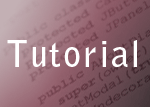Cloud and grid computing are two unique yet completely different processes. These are two kinds of programs that can be used to support with many functions. Here is a look at the ways how these two computing options can work.
Cloud and Grid Computing are Two Unique Computing Options
Cloud and grid computing are two unique yet completely different processes. These are two kinds of programs that can be used to support with many functions. Here is a look at the ways how these two computing options can work.
First there is the grid computing option. This is used to where a series of jobs, including queries and scripts, can be handled along a series of collective resources. This will be used instead of simply having one resource involved. This is used to help with getting jobs to be sent around to many places. This will help to make some processes faster and easier to handle.
A grid computing platform will have many advantages. All functions that are going to work in a grid computing platform can be handled by idle servers that are not doing anything. Also, a job on a platform can restart on its own in the event that it fails. Jobs can be split among different servers without any problems.
The cloud computing option works differently. This is where all computing platform functions will be based off of the Internet connection. A series of servers will be used to offer all sorts of programs to different users within a proper network. This will help to see that the service will be easy for anyone to work with.
A typical cloud computing application will feature a variety of benefits. It will help to back itself up. This is so the application platform can continue to operate in the event of any problems. Also, the programs on the application will be independent from one another. This means that one application on the cloud computing network that fails to work will not influence the other applications on that same network.
In fact, more servers can help to provide faster services. This is thanks to how a linear scaling process is used. One server can work with five hundred transactions in a second. Two servers can use a thousand transactions in the same period of time.
The two computing options will be suitable for different kinds of functions. Cloud computing will be best for an environment where a big number of people are looking to find small amounts of data. Grid computing will be better for smaller numbers of people who want to find larger amounts of data.
The applications used in grid computing will have to be parallelized. This means that functions must be handled simultaneously. There is no need to worry about this concern when using cloud computing. The programs on the computing can work in their own independent ways at varying times.
Grid computing involves users handling resources that are available with a provider. The resources can vary by each grid. This restriction will not be present in cloud computing. This does not mean that cloud computing can provide every single resource that a client might need all at once.
The kinds of applications that can be used will vary. Grid computing will work to handle problems that involve computations. Cloud computing is used with on demand types of functions. All users will have their own special needs with regards to what they want to get out of these two computing options. They will need to review their ideas when it comes to getting different ideas handled on any type of computer.
These two types of computing options are very different from each other. Grid and cloud computing are important to see because of how they can work with different kinds of computing services in mind. These can both be used in many forms for all computer users to handle.


[ 0 ] Comments